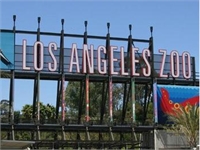
Los Angeles Zoo: Affordable Family Fun? Maybe
Important Notice: Our web hosting provider recently started charging us for additional visits, which was unexpected. In response, we're seeking donations. Depending on the situation, we may explore different monetization options for our Community and Expert Contributors. It's crucial to provide more returns for their expertise and offer more Expert Validated Answers or AI Validated Answers. Learn more about our hosting issue here.

Los Angeles Zoo: Affordable Family Fun? Maybe
You must be logged in to post a comment.
There was a time when I avoided zoos because I found them depressing. Seeing all of those poor, helpless animals in tiny cages, their freedom revoked, barely enough room to move around let alone run, only permitted to eat what their keepers deemed was necessary, sleeping most of the time because there was nothing else to do when what little food they got was gone… Such sights always filled me with sorrow and pity. Then I lost my humanity one day, so those things no longer bother me.
Actually, zoos play a vital role in preserving endangered species these days, and many animals born in captivity are released into the wild to help revitalize species that have been forced to the brink of extinction because of Man’s encroachment in their territory. This hasn’t stopped us from encroaching, of course, but it makes us feel better about ourselves as a not-even-remotely endangered species. Other animals born in captivity go to other zoos, which is a good thing as they no longer have to capture wild animals and deprive them of the freedom they deserve.
Once you get past the many touristy gift shops selling overpriced wares, a right turn takes you to the children’s portion of the zoo, where babies born in the zoo are kept safe from adults, most of which available for viewing. There is also a small and mediocre petting zoo, an exhibit where you can view the gophers through bubbles strategically placed within the enclosure, Adventure Theater and a number of caged animals, including the ocelots, which spend most of their time hiding.
For a metropolitan zoo (and especially for the second largest city in the country), the aviary is second rate at best, yet it’s one of my favorite parts of the zoo. Expect to climb—a lot—as stairs outnumber level walkways in this aviary.
The koalas remain one of the more popular exhibits, but unfortunately the kangaroos and wallabies in this same area spend most of their time reclining and staring at visitors with bored expressions. Although the komodo dragons spend nearly all of their time immobile, the sheer size of these monsters remains impressive.